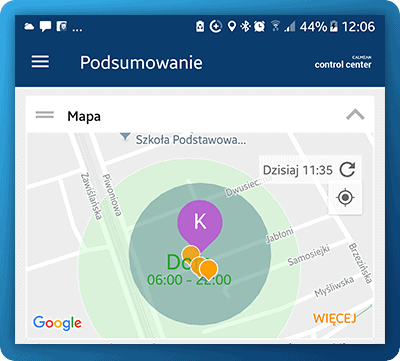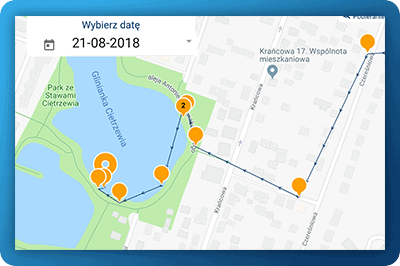Jak możemy Ci pomóc?
How location works ?
![]() Agnes, 12 December, 2018
Agnes, 12 December, 2018
The child’s location works based on the available location services on his phone. Typically, the location is given based on GPS readings that are possible if the device is outside. Inside the buildings, the GPS signal is lost. Then, data about nearby Wi-Fi networks and base stations of mobile operators are downloaded. The Parental Control application does not have an impact to the accuracy of the child’s location.
The condition for indicating current child’s location is to enable location services on his phone. Without this the parent’s application (Control Center) will not be able to receive information about the child’s location. To check the location of the child, click on the <MORE> button on the map displayed on the child’s profile in the Control Center application. The data should refresh itself.

You can also display historical data up to 365 days back. Just select the desired date on the map.

The device location records are joint in one path of movement.
Location accuracy depends on the location method:
- GPS – point location (accuracy up to 1 m, average 10-15 meters), presented on the map as an orange pin. It operates on the basis of a network of 31 satellites and terrestrial receivers, most often the device uses it while being in an open space. Disturbances or loss of signal may be cause by: entrance to the building, being next to the a high building or between buildings, or becouse of moving at high speed under the roof (eg Train).
- WiFi and data on base stations of mobile operators– depicted on the map as a small gray circle. Location of medium accuracy (several dozen meters). One of two types of so-called approximate locations, gives the position as a circle with a given radius within which the device is located. The device does not log in to any wifi network, it uses only the signal strength and network name to approximate the location of the device.
In the case of a small scale map view, locations from nearby places are combined into one point, which breaks down into smaller ones when the map view is zoomed.
In addition, owners of more devices have the opportunity to view their current position on one common map.
